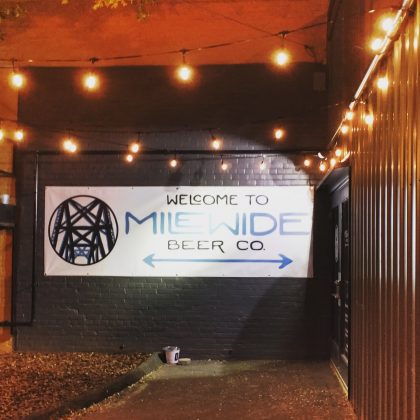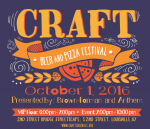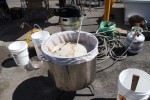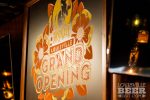 I am very pleased that Kevin Gibson has produced a book about the history of brewing in Louisville. Our city has a rich past and brewing is certainly a part of that history.
I am very pleased that Kevin Gibson has produced a book about the history of brewing in Louisville. Our city has a rich past and brewing is certainly a part of that history.
Mr. Gibson started with a cursory overview of the beginnings of brewing in ancient times, and then moved to early Louisville and the first breweries in the city. He made it very clear that brewing in Louisville between the mid 1800s and Prohibition was a boom-time for beer in Louisville. There was a nice description of the early beer gardens in Louisville and their importance as a major recreation for citizens.
This is followed by Prohibition and how it all but killed brewing in Louisville. Of course this was not unique to Louisville, but a familiar scenario across the US. Only a few breweries re-emerged after prohibition and after the dust settled – beer had changed.
He explained how post-prohibition Louisville Breweries dwindled and died out due to strong national brands driving out the local and regional breweries using their big advertising budgets.
When describing the early beers of Louisville, there seemed to be some confusion about what constitutes an ale vs. a lager. He explained that lagers are both “hopped and malted”. However, both lagers and ales have malted grains and hops. Several times Mr. Gibson discussed stouts and porters as something separate from an ale, but all beers are either ales or lagers. Stouts, cream beers, and porters are all “ales”. That was confusing.
Additionally, Gibson speculated that some of the early breweries made ales that were very bitter – between70-80 IBUs!? I would be surprised if the bitterness were anywhere near that high. The styles of beer brewed around the world at that time were typically lower alcohol and lower bitterness. Not the hop-bombs many of us enjoy these days.
English Mild Ales and porters were/are much lower in IBUs. Traditional German Lagers/Pilsners were probably somewhat more bitter than modern German Pilsners – which are 30-40 IBUs.
The Oxford Companion to Beer, edited by Garrett Oliver, indicates that pre-prohibition Cream Ales were typically more bitter than modern cream ales, but still only around 30 IBUs. It is doubtful that pre-prohibition beers were anywhere close to the 70-80 IBUs Mr. Gibson reported.
I do enjoy reading history and I wish there was more history in the book.
Mr. Gibson touched on the Bloody Monday Riots of 1855, but not enough to give the reader a good understanding of the situation. More information regarding the riots would help us understand what was driving the temperance movement in Louisville, and how it eventually led to prohibition. I understand there was violence, but the impetus behind the outrage and killing was not explained-was it anti-alcohol, and/or Protestant vs. Catholic?
The WWI backlash further hindered brewing of the time (largely an occupation of German immigrants). Was anti-German sentiment a factor in driving American citizens to instate prohibition? Maureen Ogle discusses this thoroughly in her book, Ambitious Brew: The Story of American Beer. I wish Gibson had further explored how this unfolded in Louisville.
Mr. Gibson mentions the Central Consumers Company as a monopoly that controlled many of the early breweries, while others fought to remain independent. He never explained the significance of the CCC. Who owned this company and which breweries were owned/operated by the Central Consumers Company. This would have helped in understanding the climate of the brewing business during that time.
There was a good deal of discussion about Fehr’s, Oertel’s, and Falls City and their development. He goes on to review their demise and eventual resurrection – or attempts to bring back those brands.
I was happy to learn more about the modern brewing history in Louisville. We learn about the beginnings of the now defunct Silo Brewpub and Pipkin Brewing to the birth of the Bluegrass Brewing Company – and beyond. Gibson shared interesting details about the BBC, like how some of the most beloved current beers date back to the recipes of their first brew master, David Pierce (Dark Star Porter, APA, etc.).
There was a nice discussion of the Kentucky Common style beer, unique to our Commonwealth, and its recent revival. The photography is nice and features some interesting Louisville breweriana. (Although, I do question why he included a modern photo of the KFC where an old beer garden once stood?)
Gibson shared New Albanian Brewing Company’s Roger Baylor’s lamentation that back in the day he encouraged Louisville breweries to embrace bourbon barrel beers but they did not. Mr. Gibson goes on to say that eventually Alltech began offering a Bourbon Barrel Ale. He noted that, “at least someone was paying attention.”
He failed to mention the Bluegrass Brewing Company’s Jefferson’s Reserve Bourbon Barrel Stout – which had been available since at least 2006. Now replaced by the Bourbon Barrel Stout, which is one of their best selling beers.
Near the end of the book Mr. Gibson summarized some of the newer Louisville breweries. I do not agree that Against the Grain should be included in the “up and comers” section of the book. They have been around since 2011 and they have recently announced a massive expansion. Their beers are distributed in 38 states and internationally. I think they are a very established part of the beer scene.
In the end, I believe this book is more for the beer fan that is interested in history, rather than for a history buff interested in beer.
This book makes me want to read the book Mr. Gibson references frequently – Guetig &Selles – Louisville Breweries: A History of the Brewing Industry in Louisville, Kentucky – but it is out of print and copies are going for over $100. (I don’t want to read it that badly!)
The book ends with a look toward the future and some of the newer breweries in town – and even names a few that have yet to break ground. The message is clear – Louisville has robust brewing history and a bright future.





